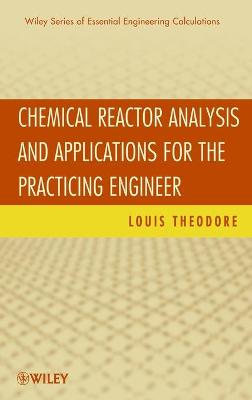Essential Engineering Calculations
5 primary works
Book 3
Mass Transfer Operations for the Practicing Engineer
by Louis Theodore and Francesco Ricci
Book 4
In addition to providing a detailed treatment of the various types of heat exchangers, this part also examines the impact of entropy calculations on exchanger design, and operation, maintenance and inspection (OM&I), plus refractory and insulation effects. The concluding Part of the text examines ABET (Accreditation Board for Engineering and Technology) related topics of concern, including economies and finance, numerical methods, open-ended problems, ethics, environmental management, and safety and accident management.
Book 5
Chemical Reactor Analysis and Applications for the Practicing Engineer
by Louis Theodore
The first part serves as an introduction to the subject title and contains chapters dealing with history, process variables, basic operations, kinetic principles, and conversion variables. The second part of the book addresses traditional reactor analysis; chapter topics include batch, CSTRs, tubular flow reactors, plus a comparison of these classes of reactors. Part 3 keys on reactor applications that include non-ideal reactors: thermal effects, interpretation of kinetic data, and reactor design. The book concludes with other reactor topics; chapter titles include catalysis, catalytic reactors, other reactions and reactors, and ABET-related topics. An extensive Appendix is also included
Book 6
Fluid Flow for the Practicing Chemical Engineer
by James Patrick Abulencia and Louis Theodore
Book 9


